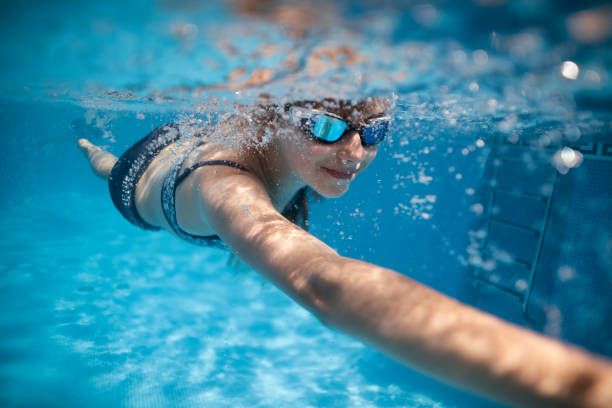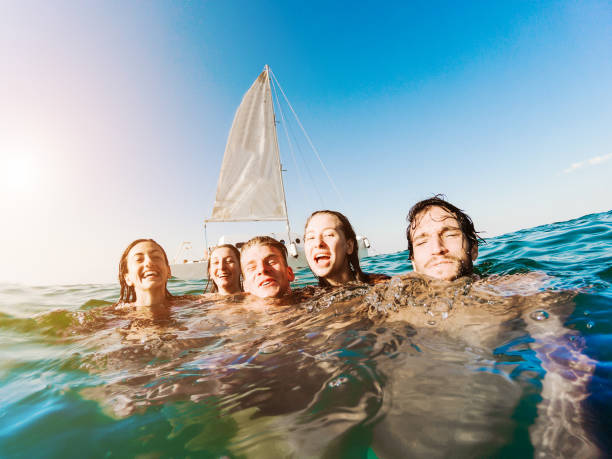Introduction
Swimming has always been more than a leisure activity; it’s a fundamental life skill and an excellent form of exercise. Dive into the world of swimming with us, exploring the different strokes, the right gear, and the numerous health benefits it offers. This guide aims to break down the complexity of swimming into easy-to-follow sections, ensuring that you not only understand the techniques but also develop a deep appreciation for this timeless sport.
Benefits of Swimming
Physical Benefits
Swimming isn’t just a workout; it’s a holistic approach to fitness. As your body moves gracefully through the water, your cardiovascular system gets thorough training, improving your heart health. The resistance of the water engages multiple muscle groups, toning your body and building strength without the strain that comes with many other forms of exercise. Additionally, swimming is a calorie-burning powerhouse, making it an effective tool for weight management.
Mental Health Benefits
The benefits of swimming extend far beyond the physical realm. The rhythmic nature of strokes combined with the soothing sensation of water can significantly reduce stress. It’s a form of moving meditation that provides mental clarity and enhances focus. Furthermore, the release of endorphins during swimming creates a positive mood, making it an excellent way to boost your overall well-being.

Different Styles of Swimming
Freestyle
Mastering freestyle might seem daunting, but breaking it down into simple steps makes it more manageable. Focus on your arm movements, ensuring they cut through the water smoothly. Remember, a proper body roll is critical to reducing drag and increasing speed—practice drills like bilateral breathing to enhance your technique gradually.
Breaststroke
Breaststroke is often the first stroke we learn, but perfecting it requires attention to detail. Keep your body streamlined, and work on your kick technique. Avoid the common mistake of splaying your elbows outwards; instead, maintain a simplified pull and kick motion for efficient swimming.
Backstroke
Backstroke might seem effortless, but it demands precise body positioning. Your body should remain flat, with a slight rotation, for optimal speed. Practice flip-turn techniques to maintain momentum during laps. Engage in backstroke drills, focusing on your arm movements and flutter kicks.
Butterfly Stroke
The butterfly stroke is elegant yet powerful. Focus on the coordination of your arms and legs, propelling yourself forward with each stroke. Perfect your breathing technique; timing your breaths with your arm movements ensures a smooth rhythm. Butterfly drills, especially those emphasizing endurance, can significantly enhance your performance.

Swimming Equipment and Gear
Swimsuits and swim caps
Choosing the right swimsuit is crucial for comfort and efficiency. Look for suits made from chlorine-resistant fabric, providing durability for regular use. Pair it with a snug swim cap to reduce water resistance, allowing you to glide effortlessly through the water.
Goggles and Nose Clips
Invest in high-quality goggles that fit your face shape to prevent water leakage. Goggles with anti-fog and UV protection enhance visibility and eye comfort. Additionally, use nose clips for unobstructed breathing, especially during intensive training sessions.
Safety Measures and Swimming Etiquette
Pool Safety
Swimming safety begins with understanding your environment. Continuously swim in designated areas with lifeguards present. When venturing into open water, be aware of the current and weather conditions. Practice water safety drills to boost your confidence and enhance your response in emergencies.
Swimming Etiquette
Respect fellow swimmers by adhering to lane etiquette. Faster swimmers typically occupy the left side of the lane, overtaking slower ones on the right. Avoid sudden stops in the middle of the road, ensuring a smooth flow for everyone. In public swimming areas, be mindful of children and novice swimmers, maintaining a safe distance to prevent accidents.
Swimming as a Competitive Sport
Overview of Competitive Swimming
Competitive swimming offers a diverse range of events, from freestyle sprints to medley relays. Studying the techniques of renowned swimmers like Michael Phelps can inspire and educate aspiring athletes. Understanding different strokes and their strategic use in competitions provides valuable insights into the world of professional swimming.
Training and Nutrition for Competitive Swimmers
A structured training routine is the backbone of competitive swimming. Focus on endurance, speed, and technique, incorporating interval training and drills specific to your chosen events. Nutrition plays a vital role; fuel your body with a balanced diet rich in proteins, complex carbohydrates, and essential vitamins and minerals to optimize your performance.

Swimming for Special Populations
Swimming for Children
Teaching children how to swim is not only a safety measure but also an enjoyable bonding experience. Start with basic water confidence exercises, gradually introducing strokes and techniques. Incorporate games and rewards to keep them engaged, fostering a positive attitude toward swimming from an early age.
Swimming for Seniors
Swimming is a low-impact exercise ideal for seniors. It offers joint-friendly movement, improving flexibility and balance. Engage in water aerobics and gentle strokes like breaststroke to enhance cardiovascular health. Regular swimming sessions can alleviate joint pain and promote overall well-being in older adults.
Conclusion: Embracing the Swim
Swimming is more than a sport; it’s a lifestyle. As you navigate the waters, you embark on a journey of physical and mental well-being. Embrace the joy of gliding through the water, feeling the rhythm of your strokes, and the soothing embrace of the pool or open water. Whether you’re a beginner learning the basics or a seasoned competitor refining your techniques, swimming offers a universal appeal that transcends age and skill levels.
(FAQ)
Q1: Can swimming help with weight loss?
A1: Absolutely! Swimming is a highly effective calorie-burning exercise, making it an excellent choice for weight loss. Regular swimming sessions combined with a balanced diet can help you shed excess pounds and improve overall fitness.
Q2: Is it necessary to wear swim caps and goggles?
A2: While not mandatory, swim caps reduce water resistance, enhancing your speed. Goggles protect your eyes and improve visibility underwater. Wearing both ensures a comfortable and efficient swimming experience.
Q3: How can I improve my breathing technique while swimming?
A3: Practice rhythmic breathing by coordinating your breaths with your arm movements. Bilateral breathing (breathing on both sides) helps balance your stroke. Start with breathing drills, gradually incorporating them into your swimming routine for improvement.
Q4: Can seniors with joint issues benefit from swimming?
A4: Absolutely. Swimming is low-impact, relieving stress on joints while providing an excellent cardiovascular workout. It enhances flexibility and balance, making it an ideal exercise for seniors with joint problems.
Q5: Is it safe to swim in open water?
A5: Open-water swimming can be safe if you follow safety guidelines. Continuously swim in designated areas with lifeguards. Be aware of water conditions, currents, and weather forecasts. It’s advisable to swim with a buddy and wear a bright swim cap for visibility.
Q6: Can swimming help improve my posture?
A6: Yes, swimming engages your core muscles, promoting better posture. It strengthens your back and shoulder muscles, reducing the likelihood of slouching and improving overall body alignment.
Q7: How can I prevent swimmer’s ear?
A7: Prevent the swimmer’s ear by wearing earplugs while swimming. Dry ears carefully with a towel or hairdryer on low setting. Don’t put objects in the ears to avoid damaging the skin inside.
Q8: How often should I practice swimming to see noticeable improvements?
A8: Consistency is critical. Aim for at least 2-3 swimming sessions per week. Regular practice allows your body to adapt, improving endurance, technique, and overall swimming performance.
Q9: Can swimming be a social activity?
A9: Absolutely! Many communities have swim clubs or classes where people of all ages socialize while swimming. Joining a swim group not only makes the activity more enjoyable but also provides a supportive community to motivate you.
Incorporating swimming into your life enriches your physical health, mental well-being, and overall quality of life. So, grab your swimsuit, goggles, and cap, and dive into the world of swimming. Whether you’re aiming for fitness, competition, or pure enjoyment, the water awaits, ready to embrace you in its refreshing embrace. Happy swimming!
Read also .. Unraveling the Marvels of Vitamin B5: A Comprehensive Guide to Its Surprising Benefits

